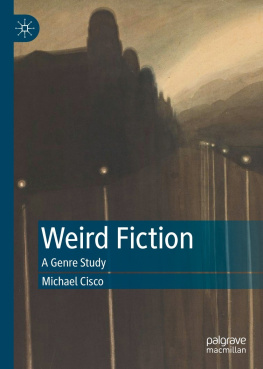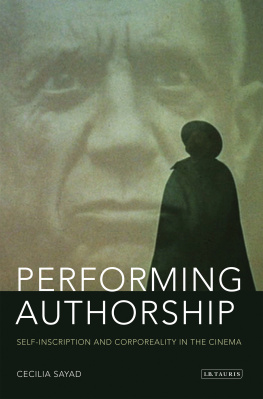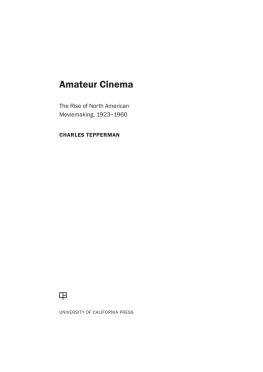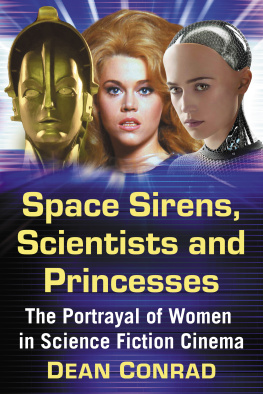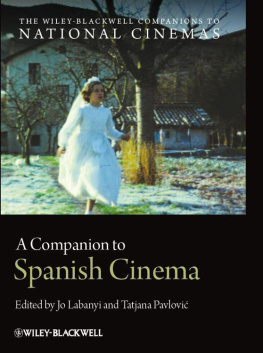Thinking Through Cinema
Thomas E. Wartenberg, Series Editor
What Is Non-Fiction Cinema? On the Very Idea of Motion Picture Communication, Trevor Ponech
Thinking Through Cinema
First published in 1999 by Westview Press
Published in 2021 by Routledge
605 Third Avenue, New York, NY 10017
2 Park Square, Milton Park, Abingdon, Oxon OX14 4RN
Routledge is an imprint of the Taylor & Francis Group, an informa business
Copyright 1999 by Taylor & Francis
All rights reserved. No part of this book may be reprinted or reproduced or utilised in any form or by any electronic, mechanical, or other means, now known or hereafter invented, including photocopying and recording, or in any information storage or retrieval system, without permission in writing from the publishers.
Notice:
Product or corporate names may be trademarks or registered trademarks, and are used only for identification and explanation without intent to infringe.
Library of Congress Cataloging-in-Publication Data
Ponech, Trevor.
What is non-fiction cinema?: on the very idea of motion picture
communication / Trevor Ponech.
p. cm.
Includes bibliographical references and index.
ISBN 0-8133-6703-4
1. Documentary filmsHistory and criticism. I. Title.
PN1995.9.D6P683 1999
070.18dc21
98-55484
CIP
ISBN 13: 978-0-3672-1341-1 (hbk)
ISBN 13: 978-0-3672-1622-1 (pbk)
DOI: 10.4324/9780429267499
Contents
Acknowledgments
1 What Is Non-Fiction Cinema?
The Meaning of Non-Fiction
Language, Cinema, and Assertion
Essentialism in Context
Skepticism About Intentions
Notes
2 Representation and Depiction
Representational Systems
Cinematic Representation
Misrepresentation
Notes
3 What About Reality?
In Search of Sasquatch
Situations and Interpretations
Notes
4 Plans for Non-Fiction
Intention
Moderate Intentionalism
Notes
5 Planning for Content
Explaining Content with Intentions
Nanook of the North
Notes
6 Planning for Force
Fiction
Fixed Boundaries, Mixed Intentions
Complex Illocutionary Plans
Notes
7 Perceptual Access to Cinematic Meaning
Visual Perception
Perceptual Access to Cinematic Meaning
Projective Illusion
Imagined Seeing
Transparency
The Representation Thesis
Notes
8 Aspects of Interpretation
First Principles of Documentary Interpretation
Illocutionary Uptake
Truth in Non-Fiction
Notes
9 The Truth of Non-Fiction
Truth As Correspondence
Non-Fiction Cinema and Justification
Symbolic Meaning, Narrative, and Epistemic Access
Notes
- Acknowledgments Page
- 1 What Is Non-Fiction Cinema?
- The Meaning of Non-Fiction
- Language, Cinema, and Assertion
- Essentialism in Context
- Skepticism About Intentions
- Notes
- 2 Representation and Depiction
- Representational Systems
- Cinematic Representation
- Misrepresentation
- Notes
- 3 What About Reality?
- In Search of Sasquatch
- Situations and Interpretations
- Notes
- 4 Plans for Non-Fiction
- Intention
- Moderate Intentionalism
- Notes
- 5 Planning for Content
- Explaining Content with Intentions
- Nanook of the North
- Notes
- 6 Planning for Force
- Fiction
- Fixed Boundaries, Mixed Intentions
- Complex Illocutionary Plans
- Notes
- 7 Perceptual Access to Cinematic Meaning
- Visual Perception
- Perceptual Access to Cinematic Meaning
- Projective Illusion
- Imagined Seeing
- Transparency
- The Representation Thesis
- Notes
- 8 Aspects of Interpretation
- First Principles of Documentary Interpretation
- Illocutionary Uptake
- Truth in Non-Fiction
- Notes
- 9 The Truth of Non-Fiction
- Truth As Correspondence
- Non-Fiction Cinema and Justification
- Symbolic Meaning, Narrative, and Epistemic Access
- Notes
Guide
- Acknowledgments Page
Acknowledgments
It was Peter Ohlin who introduced me to non-fiction cinema as both an art form and a vital area of scholarship; for all his guidance, insight, and support my thanks to Peter are long overdue. The chairman of McGill Universitys Department of English, Gary Wihl, also deserves acknowledgment for his commitment to my development as a scholar and colleague. I am especially grateful to my mentor and friend, Paisley Livingston. I cannot even imagine an intellectual life without this generous tutelary soul, who has for fifteen years shared with me his unique vision of philosophys relation to humanistic inquiry. In recent years, Mette Hjort has been another special source of inspiration and support. At a turning point, this book and my prospects were much improved because she gave me a little writing table, and a real home, on Hollndervej. I am indebted to Thomas E. Wartenberg, whose Thinking Through Cinema series could not be a more appropriately named venue for my study. I would also like to thank the editors at Westview Press, including David Toole, whose intelligent copyediting made this book better. And thanks again to Paisley, for the unintended push to broaden the projects scope by asking me the musical question: Is that all there is?
The person who taught me that there is much more, that there is perceptible beauty in the world and irreducible love, and wished so hard for us to share these, died as I was writing this book. I finished the work as best I couldknowing there would be no evidence of love or beauty in it unless it bore her name. That is why I dedicate What is Non-Fiction Cinema? to Julie Rolston.
Trevor Ponech
Introduction
DOI: 10.4324/9780429267499-1
Why do some motion pictures count as non-fictions? A few moments reflection will, I think, lead most of us to realize that we are often ready, willing, and able to say that this or that film, television program, cinematic artwork, and so on isnt fiction, or is a documentary.fiction/non-fiction distinction, if any at all, can be traced. Such people undertake exercises in filmmaking, interpretation, and critique geared toward revealing, or instating, the two modes fusion. Academic cinema scholars, especially, have put a lot of energy into getting us to appreciate how incomplete the split is. Yet those who would collapse a distinction, or set out to show the underlying undifferentiation, must first be able to hold in mind a working concept of that distinction. Before one discounts the existence of something that is uniquely and finally non-fiction, one must think through the distinction in the first place.
The present study is an attempt to define non-fictions special difference, if only to give other scholars a more substantial, thickly etched boundary to try to erase. To date, there has been a lot of confusion about the terms in which to define non-fiction, which has lead to faulty constructions as well as deconstructions of the genre. I hope my own formulation is at once precise and commonsensical. In any case, it is doubly set off from other research into the topic: first, by its argument that authorial intentions and actions fully determine whether a cinematic representation will be a non-fictional work; and second, by its position that the fiction/non-fiction conceptual fission is unequivocal, essential, and ineliminable. From the vantage of communicative pragmaticswhich gives priority to the examination of how human symbolic action is rooted in beliefs, desires, and intentionsthere will never be a time or place at which it is not simply wrong to interpret



